Abstract
This is the second paper in a series of three that explores the emergence of several prominent features of the functional architecture of visual cortex, in a "modular self-adaptive network" containing several layers of cells with parallel feedforward connections whose strengths develop according to a Hebb-type correlation-rewarding rule. In the present paper I show that orientation-selective cells, similar to the "simple" cortical cells of Hubel and Wiesel [Hubel, D. H. & Wiesel, T. N. (1962) J. Physiol. 160, 106-154], emerge in such a network. No orientation preference is specified to the system at any stage, the orientation-selective cell layer emerges even in the absence of environmental input to the system, and none of the basic developmental rules is specific to visual processing.
Full text
PDF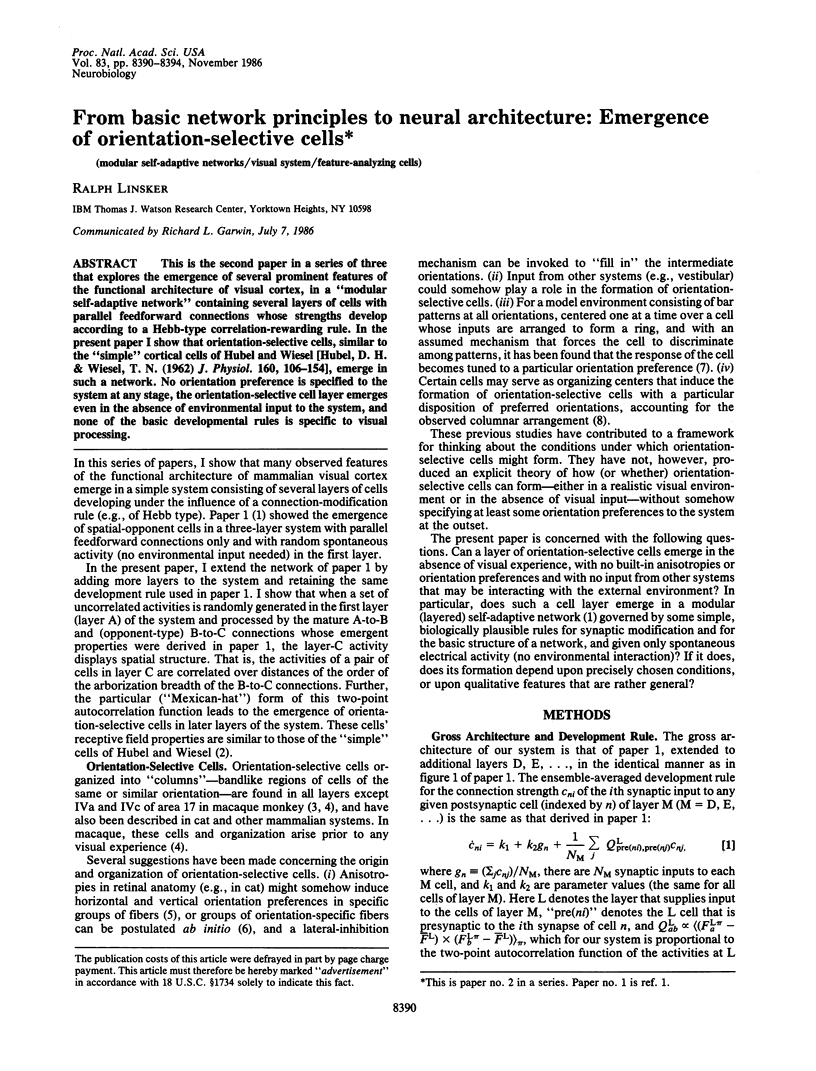
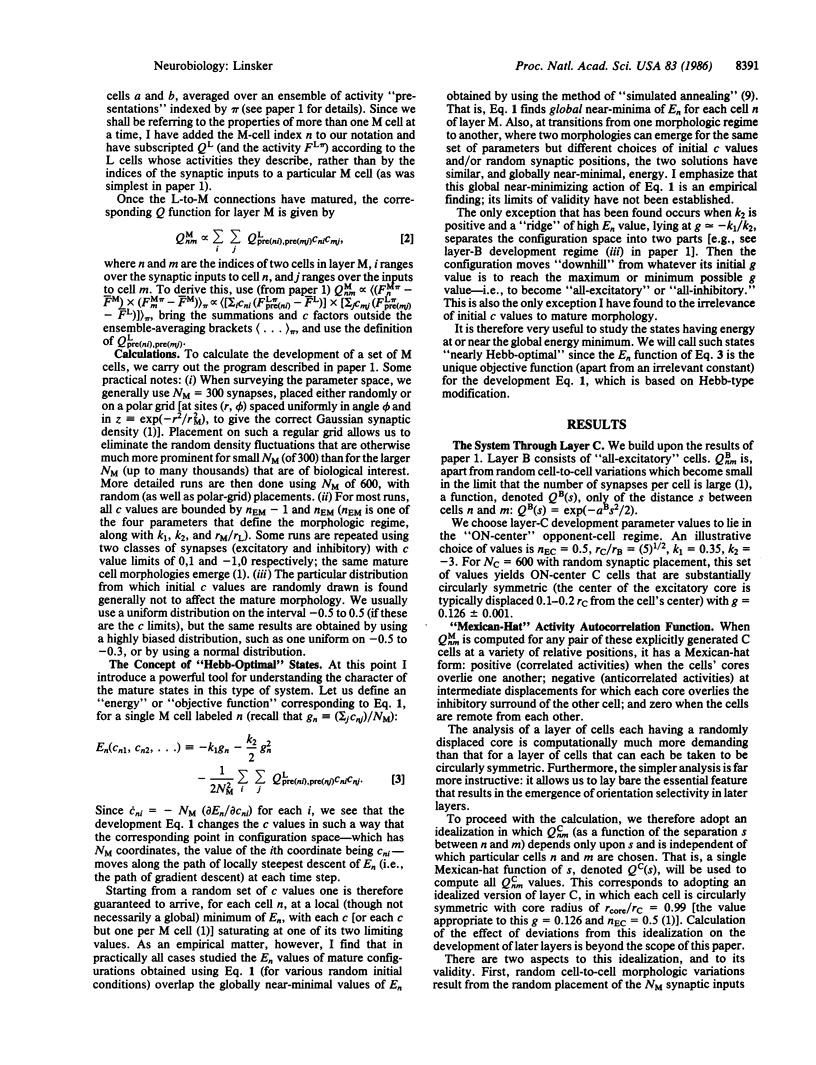
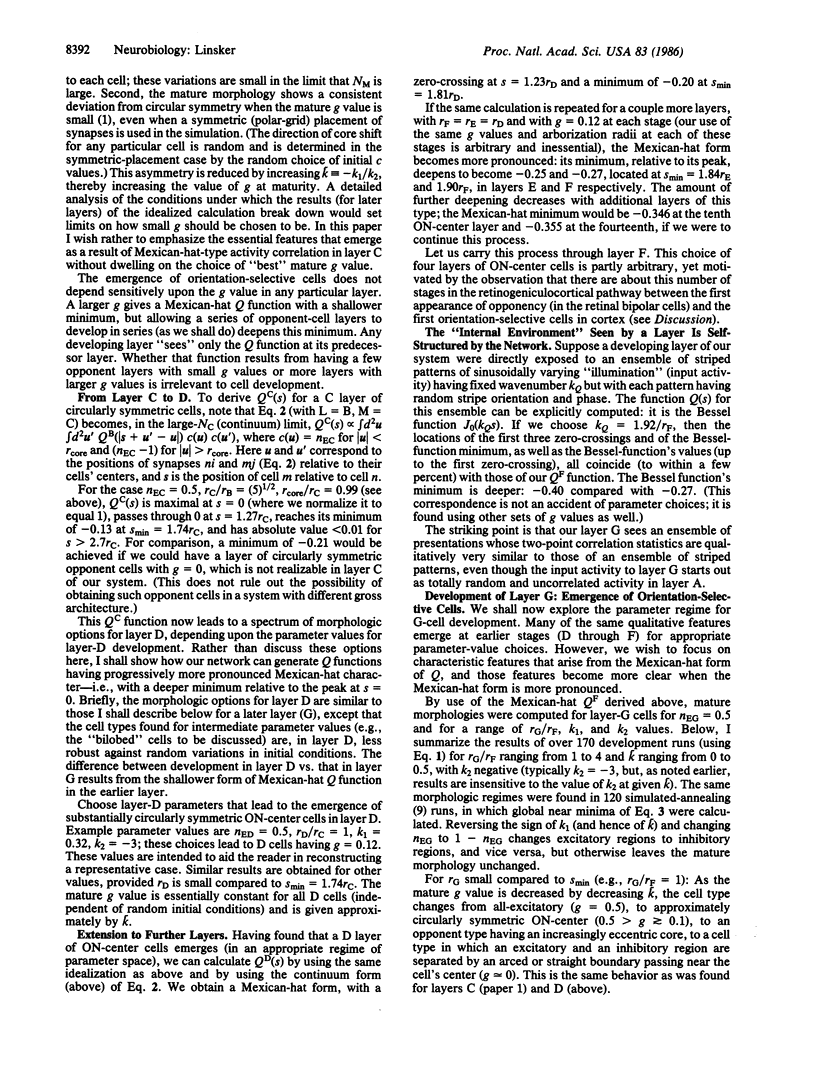
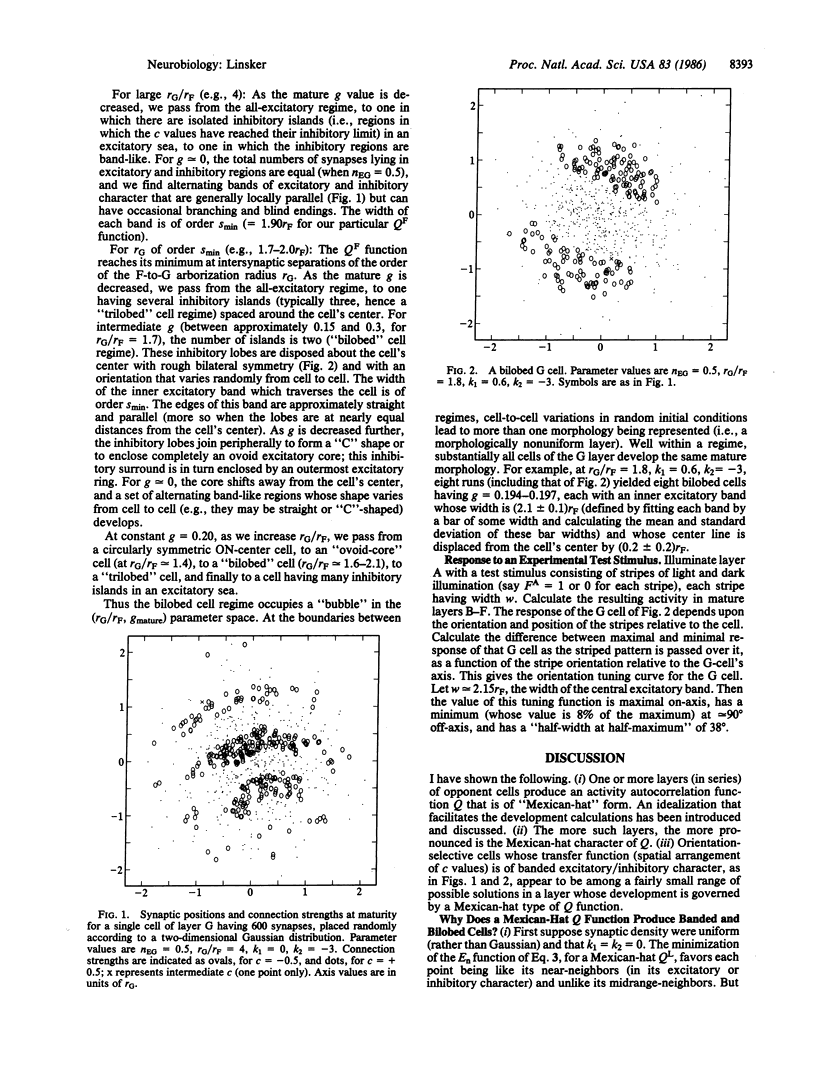
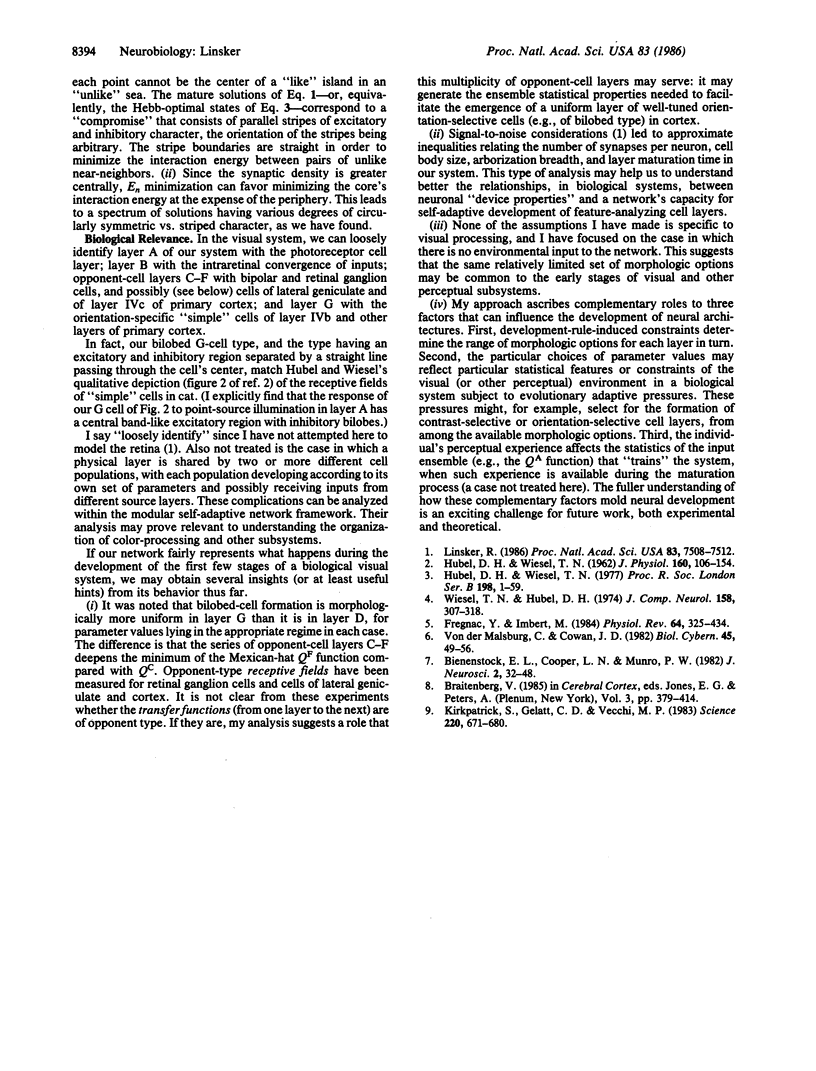
Selected References
These references are in PubMed. This may not be the complete list of references from this article.
- Bienenstock E. L., Cooper L. N., Munro P. W. Theory for the development of neuron selectivity: orientation specificity and binocular interaction in visual cortex. J Neurosci. 1982 Jan;2(1):32–48. doi: 10.1523/JNEUROSCI.02-01-00032.1982. [DOI] [PMC free article] [PubMed] [Google Scholar]
- Frégnac Y., Imbert M. Development of neuronal selectivity in primary visual cortex of cat. Physiol Rev. 1984 Jan;64(1):325–434. doi: 10.1152/physrev.1984.64.1.325. [DOI] [PubMed] [Google Scholar]
- HUBEL D. H., WIESEL T. N. Receptive fields, binocular interaction and functional architecture in the cat's visual cortex. J Physiol. 1962 Jan;160:106–154. doi: 10.1113/jphysiol.1962.sp006837. [DOI] [PMC free article] [PubMed] [Google Scholar]
- Hubel D. H., Wiesel T. N. Ferrier lecture. Functional architecture of macaque monkey visual cortex. Proc R Soc Lond B Biol Sci. 1977 Jul 28;198(1130):1–59. doi: 10.1098/rspb.1977.0085. [DOI] [PubMed] [Google Scholar]
- Kirkpatrick S., Gelatt C. D., Jr, Vecchi M. P. Optimization by simulated annealing. Science. 1983 May 13;220(4598):671–680. doi: 10.1126/science.220.4598.671. [DOI] [PubMed] [Google Scholar]
- Linsker R. From basic network principles to neural architecture: emergence of spatial-opponent cells. Proc Natl Acad Sci U S A. 1986 Oct;83(19):7508–7512. doi: 10.1073/pnas.83.19.7508. [DOI] [PMC free article] [PubMed] [Google Scholar]
- Wiesel T. N., Hubel D. H. Ordered arrangement of orientation columns in monkeys lacking visual experience. J Comp Neurol. 1974 Dec 1;158(3):307–318. doi: 10.1002/cne.901580306. [DOI] [PubMed] [Google Scholar]
- von der Malsburg C., Cowan J. D. Outline of a theory for the ontogenesis of iso-orientation domains in visual cortex. Biol Cybern. 1982;45(1):49–56. doi: 10.1007/BF00387213. [DOI] [PubMed] [Google Scholar]


